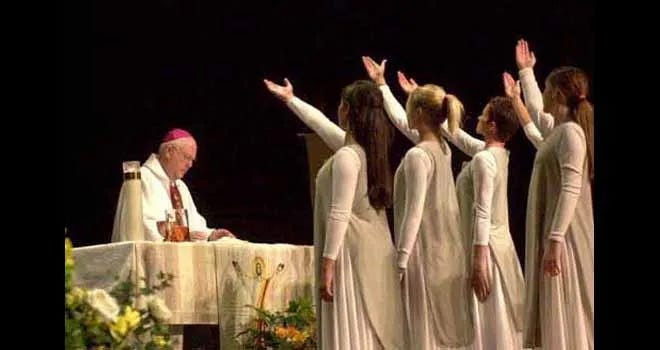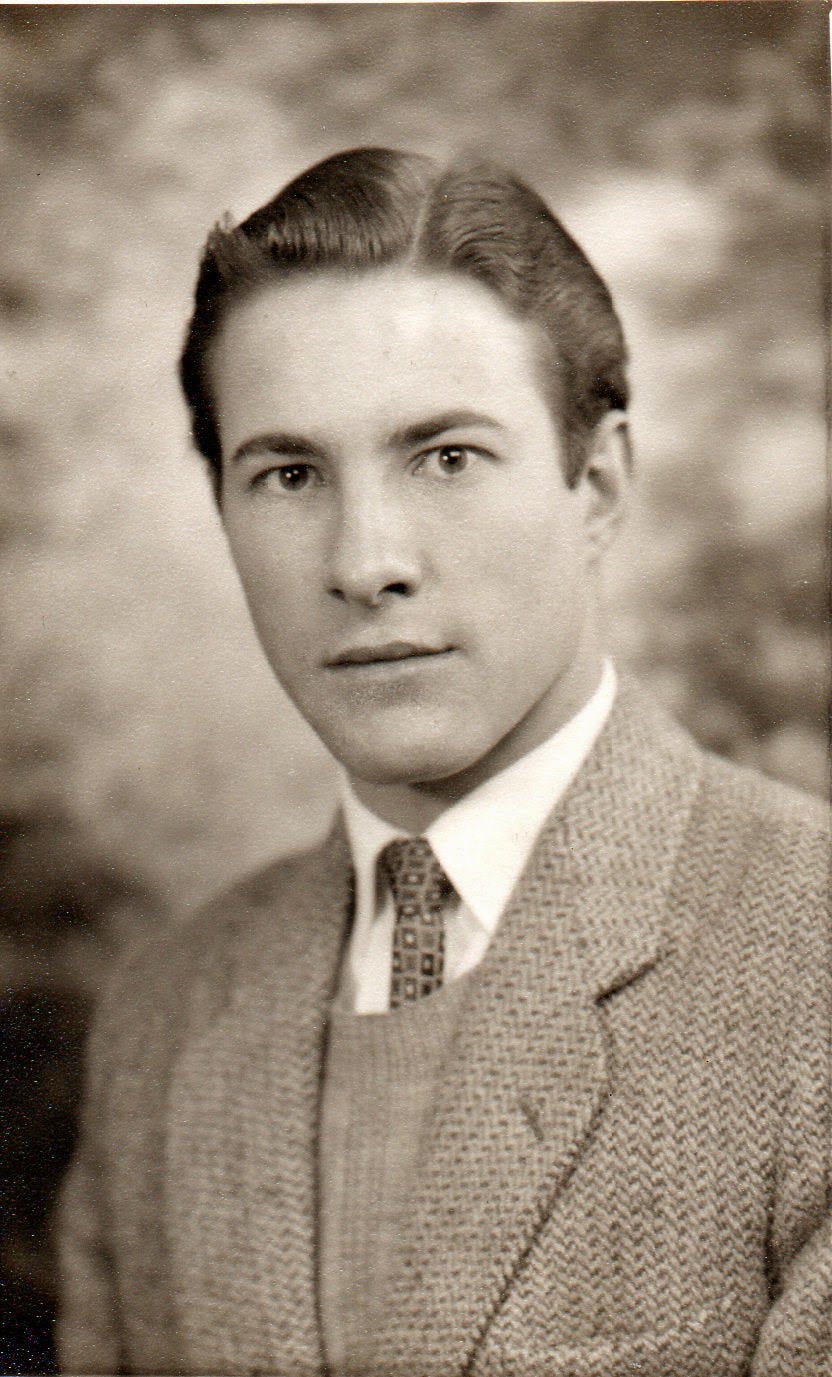*** The following is an adapted version of a talk I gave in the summer of 2022 on the New Mass and was therefore transcribed with the conversational tone with which it was presented, it was never intended to be a scholarly paper but the information presented is valid ***
Let’s consider just how old the ancient Roman rite is.
The development of the Roman Missal is as ancient as the Church in Rome. In fact, in some ways, it is more ancient.
The basic elements required for the liturgy have always been present, we find them in Scripture when we consider the institution of the Eucharist on Holy Thursday, but the liturgical tradition is much older than that.
In reality, if we are to understand where the Mass develops, we need to go back to Cain and Abel. What do we see? A sacrifice, one which is accepted by God, and one that is not. Whenever someone says about the liturgy “well who cares if it isn’t that reverent, it’s still valid” we should remember this.
It may be true that an irreverent Novus Ordo could be valid, but it is also true that God rejects sacrifices as ineffective. This does not mean the Mass would be invalid, but if we take a trip through writings of great saints, we find that where there is great holiness in priests and the faithful, there is a more efficacious transmission and acceptance of sanctifying grace.
It must be noted that the Mass is primarily a sacrifice for sin, even after Christ, as there is still sin in the world, thus if it is not clear in a liturgy that it is a sacrifice, then this is a defect and presents a danger to the faithful.
Immediately after Cain’s sacrifice is rejected by God, he murders his brother.
This should give us pause. Rather than do his sacrifice better, he seeks to murder the man who did it best.
It’s almost like today, as the Novus Ordo is dying, and it is clear that the fruits of that liturgical paradigm are not sufficient or are defective... rather than performing the sacrifice in a way that is proven to please God, there is a move to continually destroy the traditional and acceptable sacrifice. This is a spiritually murderous suppression of the true sacrifice that echoes the resentful sentiment that moved Cain to kill his brother.
After Cain and Abel, we move through Abraham, Melchizedek, and then of course to the Passover with Moses, where we find specific instructions on how to sacrifice the lamb, which prefigures Christ’s sacrifice.
It is actually believed that Melchizedek built his temple on the very spot where Herod built the cenacle where Christ said the first Mass. Remember in Genesis, Melchizedek brought forth the bread and wine and offered it to God as an image of the Mass.
There is a book I recommend to everyone called “How Christ said the first Mass” and it is an invaluable resource. It is an exhaustive study that outlines the liturgical traditions of the Hebrews that went on in the synagogues and the temple before and after Christ, and how those traditions were adopted by the Churches.
It is too much to consider the totality of it here, but we need to get beyond the cartoonish mindset of how we view ancient liturgical celebrations.
We have been influenced by corny films and documentaries about the ancient world that offer little to nothing of benefit for a true understanding of how the Prefigurement of the Mass – the temple sacrifices – took place.
Even scripture does not contain the fullness of what actually happened in the temple and in the synagogues. Much of this was passed orally or written in Hebrew theological texts like the Talmud or Midrash. Note, although the Talmudic texts after Christ were hostile to Christianity, before the coming of Christ this was the true covenant, thus investigating them is fruitful.
At any rate, the sacrifices in the temple were elaborate, with many elements, chants, postures, altars, prayers, and petitions. There were so many elements of the temple liturgy that were so extensive, that in fact different pieces of these ceremonies have been adapted in different Christian liturgies.
Synagogues were not like modern synagogues. Judaism today is nothing like Judaism of the past. Synagogues today are more like protestant worship centres, but in the past, what happened was liturgical.
This is why the book I mentioned is called “How Christ Said the First Mass.”
There is so much that took place at the Last Supper that is not transmitted in scripture. The Passover was a liturgy, yes there was a meal, but it was not as simple as 12 men sitting around a table with pita bread and olives. There were vestments, offerings, chants, prayers, scripture, etc.
Consider what that book says about the Cenacle, where the apostles gather with Christ for the Last Supper: “Thus over the tombs of the great kings rose the pile of buildings called the Cenacle ‘banquet hall’ but the Romans... the Greeks named it the Hyperōion ‘high’ or Anagaion ‘beautiful’ and the Jews Aliyah ‘chamber’ because it was the highest and holiest room except the Temple of all the places in the sacred city at the time of Christ.”
The reason why things were not written down is because they were passed on through tradition – sacred tradition.
The Cenacle is described as such: “It was beautifully furnished with carpets, rugs, tapestries – its walls were decorated, its furniture most costly as became that building, over the tombs of the sleeping kings resting in the rock rooms beneath. Their synagogue services were held, and it was the largest and finest of the 480 synagogues in Jerusalem at the time of Christ.”
Okay, so, taking into account the symbolism of everything just read, and the fact that it was a synagogue and not just some random apartment... it sounds a lot like somewhere an elaborate liturgy would take place.
There would have been a lot more to “do this in memory of me” than is normally understood. Christ ordains the apostles and tells them to say Mass, a real Mass, with a real liturgy that is as ancient as Melchizedek, who is said to be the son of Noah.
There is more about the cenacle and the liturgical worship that took place in that book: “The cenacle belonged to David’s family. The Lord’s Mother was the Princess of the royal family and David’s heir. Therefore Christ, Prince of the House of David, had a right to the building. Joseph of Arimathea and Nicodemus were leaders of the synagogue congregation worshiping in the cenacle. There gathered the apostles, disciples and Christ’s followers for the synagogue services on that historic Thursday night...”.
Again, this image of what took place on Holy Thursday sounds a lot more like a Feast Day Mass than a dinner party.
What sort of Lunatic would you have to be to destroy that tradition?
Well, as Michael Davies wrote: “Only heretics ever attempted any radical reform of the Liturgy.”
Thank you, Michael Davies.1
Keep reading with a 7-day free trial
Subscribe to Mere Tradition with Kennedy Hall to keep reading this post and get 7 days of free access to the full post archives.







